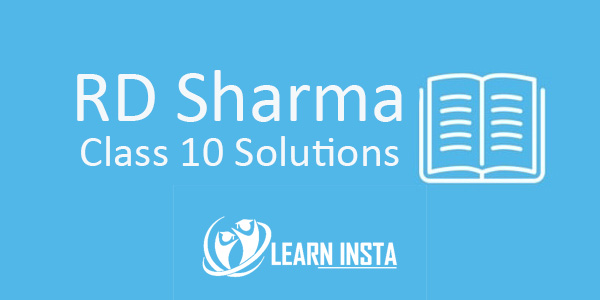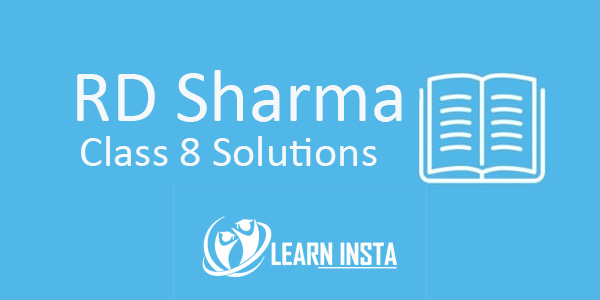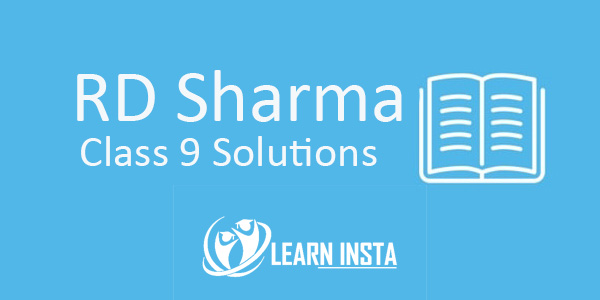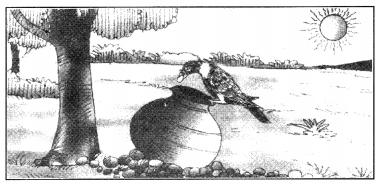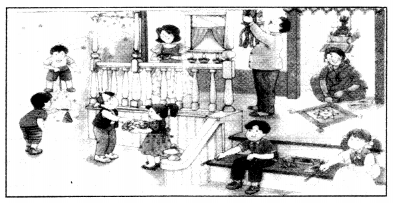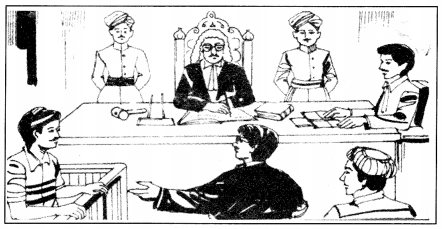By going through these CBSE Class 12 Physics Notes Chapter 3 Current Electricity, students can recall all the concepts quickly.
Current Electricity Notes Class 12 Physics Chapter 3
→ The time rate of flow of electric charge is called electric constant.
→ S.I. unit an electric current is Ampere (A).
1A = 1 C S-1.
→ Although a direction is associated with the electric current, yet it is a scalar quantity.
→ The current density is a vector quantity directed along the direction of the flow of current.
→ The number density of free electrons is of the order of 1022 per cm3.
→ The number density of free electrons is negligible in insulators.
→ S.I. unit of resistance is the ohm (Ω)
→ The reciprocal of resistance is conductance and has S.I. unit mho or Siemen (S).
→ The conductor is said to be ohmic if they obey Ohm’s law. The V-I graph for such a conductor is a straight line.
→ The conductors are said to be non-ohmic if they don’t obey Ohm’s law. The V-I graph is not a straight line for such conductors.
→ When current is drawn from a cell its terminal potential difference is less than the e.m.f. of the cell.
→ Series combination of cells is used when the internal resistance of the cell is negligible as compared to the external resistance of the circuit.
→ The parallel combination of cells is used when the external resistance of the circuit is much smaller as compared to the internal resistance of the cell
→ The mixed grouping of cells is used when the external resistance of the circuit is of the same order as the internal resistance of the cell i.e., R ≈ r.
→ Wheatstone bridge is a circuit consisting of four resistances P, Q, R, and S a galvanometer and a battery connected such that
\(\frac{P}{Q}=\frac{R}{S}\)
→ It is said to be balanced when there is no current through the galvanometer.
→ Metre bridge or Slide wire bridge is the commonly used form of the wheat stone bridge.
→ The current in the external circuit flows from the + ve to – ve terminal of the cell or battery and is called conventional current which is opposite to the electronic current.
→ Current is the same through the resistors connected in series.
→ The pot. difference is the same through the resistors connected in parallel.
→ 1 A = 6.25 × 1018 electrons flow per second
→ When a cell is short-circuited, the terminal potential diff. across it is zero.
→ α for most metals is \(\frac{1}{273}\)K-1.
→ a (temperature coefficient of resistance) for insulators and semiconductors is – ve but + ve for metals.
→ The terminal P.D. of a cell depends on the internal resistance (r) of the cell, hence it also depends on the factors on which r depends like, the area of plates, the separation between the plates, cone, electrolyte, nature of electrodes, temperature, etc.
→ 1 KWh = 3.6 × 106 J.
→ Ohm’s law: States that if physical conditions of a conductor like temperature etc. remain unchanged, then the current flowing through it is directly proportional to the potential difference applied across it.
→ Resistance of a conductor is defined as the opposition offered by it to the flow of current. It is equal to the ratio of P.D. (V) and current (I) through the conductor.
i.e, R = \(\frac{V}{I}\)
→ Current density (I): It is defined as the current per unit area of the cross-section of the conductor.
i.e., J = \(\frac{I}{A}\)
→ The internal resistance of a cell: It is defined as the resistance offered by the electrolyte of the cell to the flow of current through it.
→ Conductance: It is defined as the reciprocal of the resistance of the conductor.
i.e., G = \(\frac{1}{R}\)
→ Conductivity: It is defined as reciprocal of the resistivity of the conductor i.e. σ = \(\frac{1}{ρ}\)
→ Temperature coefficient of resistance of a conductor: It is defined as the increase in resistance per unit original resistance at 0°C per unit rise in its temperature.
→ Principle of potentiometer: It states that when a constant current is passed through a conductor of the uniform area of cross-section, the potential drop across any part of it is always directly proportional to the length of that part.
V ∝ l
→ Electric energy: It is defined as the total work done by the source of energy in maintaining the electric current through the circuit for a given time.
→ KWh: The electric energy consumed or dissipated in the circuit is said to be 1 Kilowatt-hour if a device of 1 kW power is used for one hour. It is also called UNIT.
→ Electric power: It is defined as the rate of doing work by the source .of e.m.f. in maintaining the electric current in the circuit.
→ 1 Watt: The electric power of a circuit or a device is said to be 1 watt if one ampere current flows through it on applying a P.D. of one volt.
→ Shunt: It is defined as a small resistance connected in parallel to the cell.
Important Formulae
→ Current density (J) and electric field are related as:
J = σE
R = ρ\(\frac{l}{A}\)
ρ = \(\frac{1}{σ}\)
where ρ = resistivity or specific resistance of the conductor having conductivity σ.
→ internal resistance of the cell is given by
r = \(\left(\frac{E-V}{V}\right)\)R = \(\left(\frac{\mathrm{E}}{\mathrm{V}}-1\right)\)R
→ Using potentiometer r is calculated using
r = \(\left(\frac{l_{1}}{l_{2}}-1\right)\)S = \(\left(\frac{l_{1}-l_{2}}{l_{2}}\right)\)S
where l1 and l2 are balancing lengths with cell in open closed circuits respectively.
S = shunt resistance
→ Drift velocity is given by
υd = \(\frac{\mathrm{I}}{\text { neA }}\)
or
I = neAvd.
→ Current in the serìcs circuit of n cells is
Is = \(\frac{n E}{R+n r}\)
→ Current in the circuit of m cells in parallel is given by
Ip = \(\frac{E}{R+\frac{r}{m}}\)
→ In mixed grouping of cells, I in the circuit is given by,
Im = \(\frac{\mathrm{nE}}{\mathrm{R}+\frac{\mathrm{nr}}{\mathrm{m}}}\)
→ I due to a single cell is
I = \(\frac{E}{R+r}\)
→ The equivalent resistance and power of resistance connected in series are given by:
Rs = R1 + R2 + R3 + ……………
and \(\frac{1}{P_{\mathrm{s}}}=\frac{1}{P_{1}}+\frac{1}{P_{2}}+\frac{1}{P_{3}}+\ldots\)
→ Time required to neutralise earth’s surface,
t = \(\frac{\sigma \mathrm{A}}{\mathrm{I}}=\frac{\sigma .4 \pi \mathrm{R}^{2}}{\mathrm{I}}\)
Where R = radius of earth,
σ = surface charge density
I = current over globe
→ The equivalent resistance and power of resistance connected in parallel are given by and
\(\frac{1}{\mathrm{R}_{\mathrm{P}}}=\frac{1}{\mathrm{R}_{1}}+\frac{1}{\mathrm{R}_{2}}+\frac{1}{\mathrm{R}_{3}}+\ldots\) and
Pp = P1 + P2 + P3 + ………….
→ Electric energy is given by
E = Pt = VIt = I2Rt = \(\frac{\mathrm{V}^{2}}{\mathrm{R}}\) t.
→ Electric power is given by
P = \(\frac{E}{t}\) = VI = I2R = \(\frac{\mathrm{V}^{2}}{\mathrm{R}}\)
→ Variation of resistance and resistivity with temperature is given by
Rt = R0 (1 + α Δ t)
and pt = p0 (1 + αΔt)
→ V = kl for potentiometer.
→ \(\frac{\mathrm{E}_{1}}{\mathrm{E}_{2}}=\frac{l_{1}}{l_{2}}\) where E1 and E2 are emfs of two cells l1, l2 = corresponding balancing lengths.
→ \(\overrightarrow{v_{\mathrm{d}}}\) = – \(\frac{\mathrm{e} \overrightarrow{\mathrm{E}}}{\mathrm{m}}\) τ
→ ρ = \(\frac{\mathrm{m}}{\mathrm{ne}^{2} \tau}\)
where τ = relaxation time,
n = current density of free electron,
e = charge of an electron.
